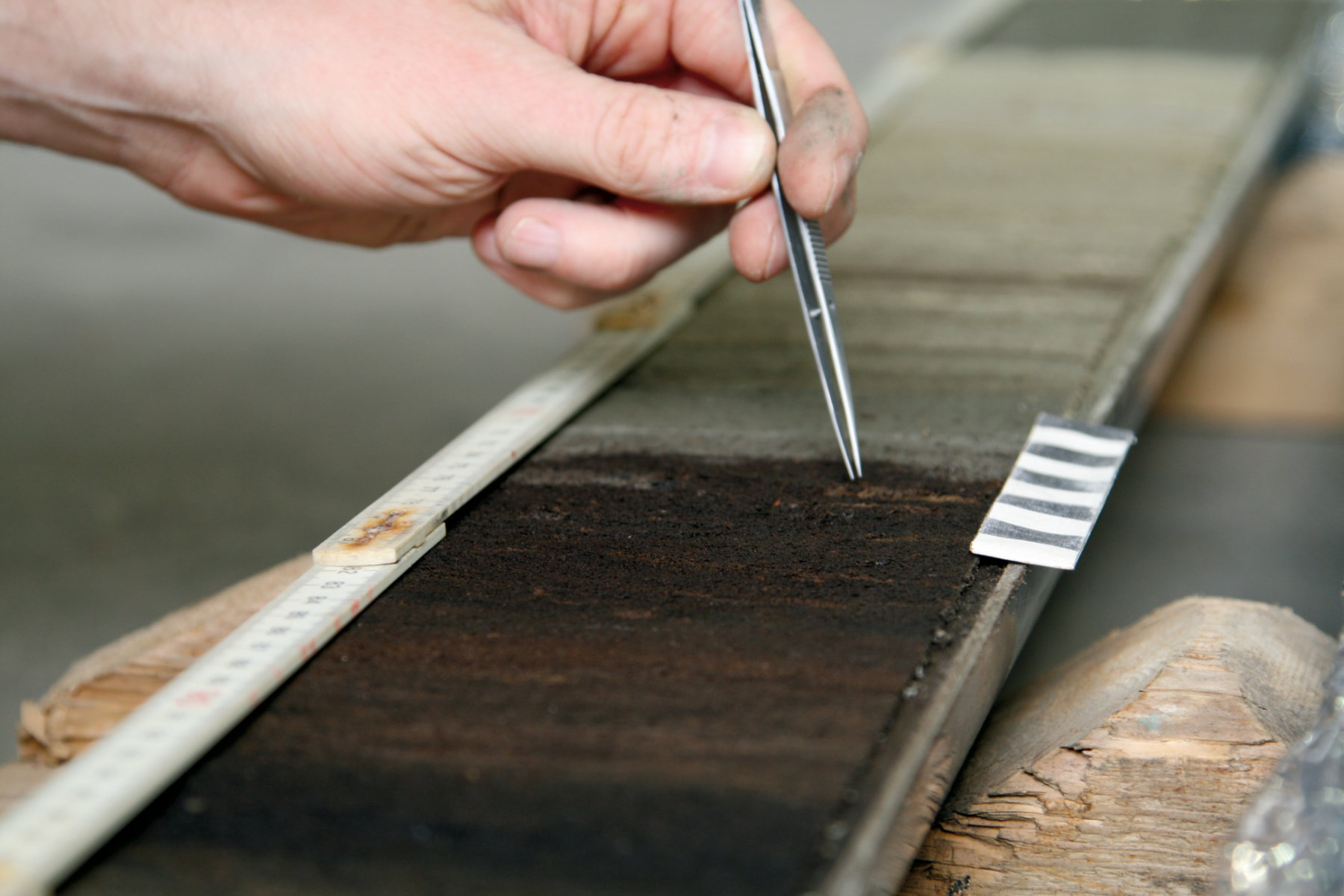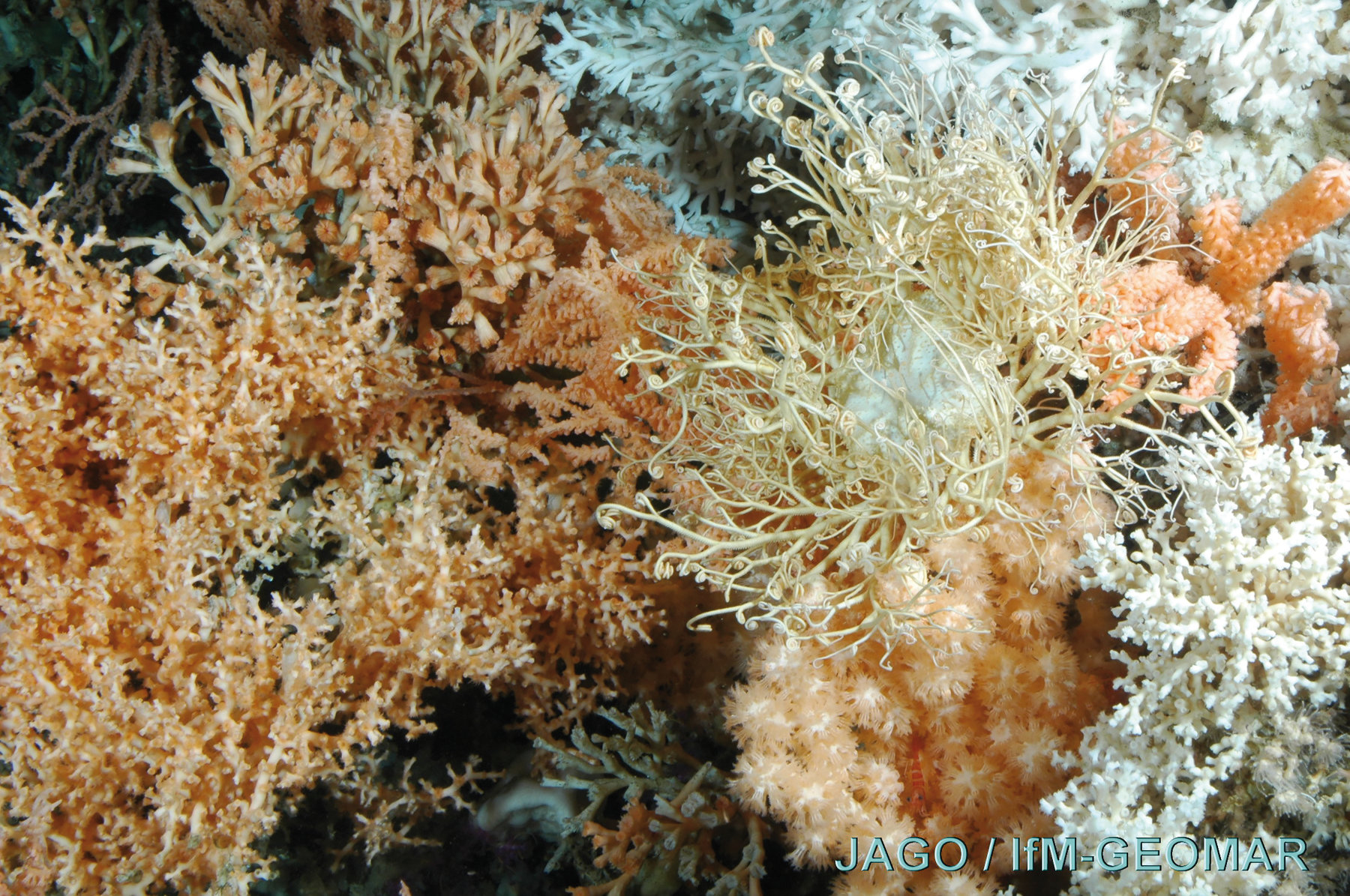Martin Wahl is deeply concerned about the rapid physical, chemical and biological changes now taking place in the ocean. He sees little chance of preserving its present condition, or of reconstituting some former and purer state of nature there. Instead, the challenge as Wahl sees it is to mitigate the impact of global pressures like warming by reducing more local stresses, including fishing and excess nutrient input. His role as a conservation ecologist is to investigate ways of maintaining ocean function and diversity.
As a promising start to this challenging endeavour, the Kiel Excellence Cluster has catalysed research across disciplines over the past decade. Only collaborative research involving the natural sciences, the social and economic sciences, maritime law, political science and environmental ethics will produce the fundamental understanding which is needed to produce viable solutions in this complex arena.
The Cluster's previous research on ocean acidification and warming is a case in point. As humans burn fossil fuels, the Earth gets warmer. But at the same time, some of the carbon dioxide produced by burning them is dissolved in seawater, making it less alkaline and more acidic.
If seawater becomes more acidic, mussels should find it more difficult to grow their shells. But things are not quite that simple. Biological activity in a natural community causes acidity to vary throughout the day, and mussels are expert at calcifying their shells at the best time. This typically happens during the hours of daylight, when acidity is at its lowest. Wahl adds that scientists often fail to recognise natural fluctuations on different scales, including the seasons. "If the seas are a little warmer, some species may benefit during the winter months, making them more able to resist heat stress in summer. Most fieldwork tends to happen in summer, so this aspect of global change gets missed." To overcome this bias, Wahl, Ulf Riebesell and colleagues conduct large-scale, year-round mesocosm experiments in different areas of the world (see boxes) [1].
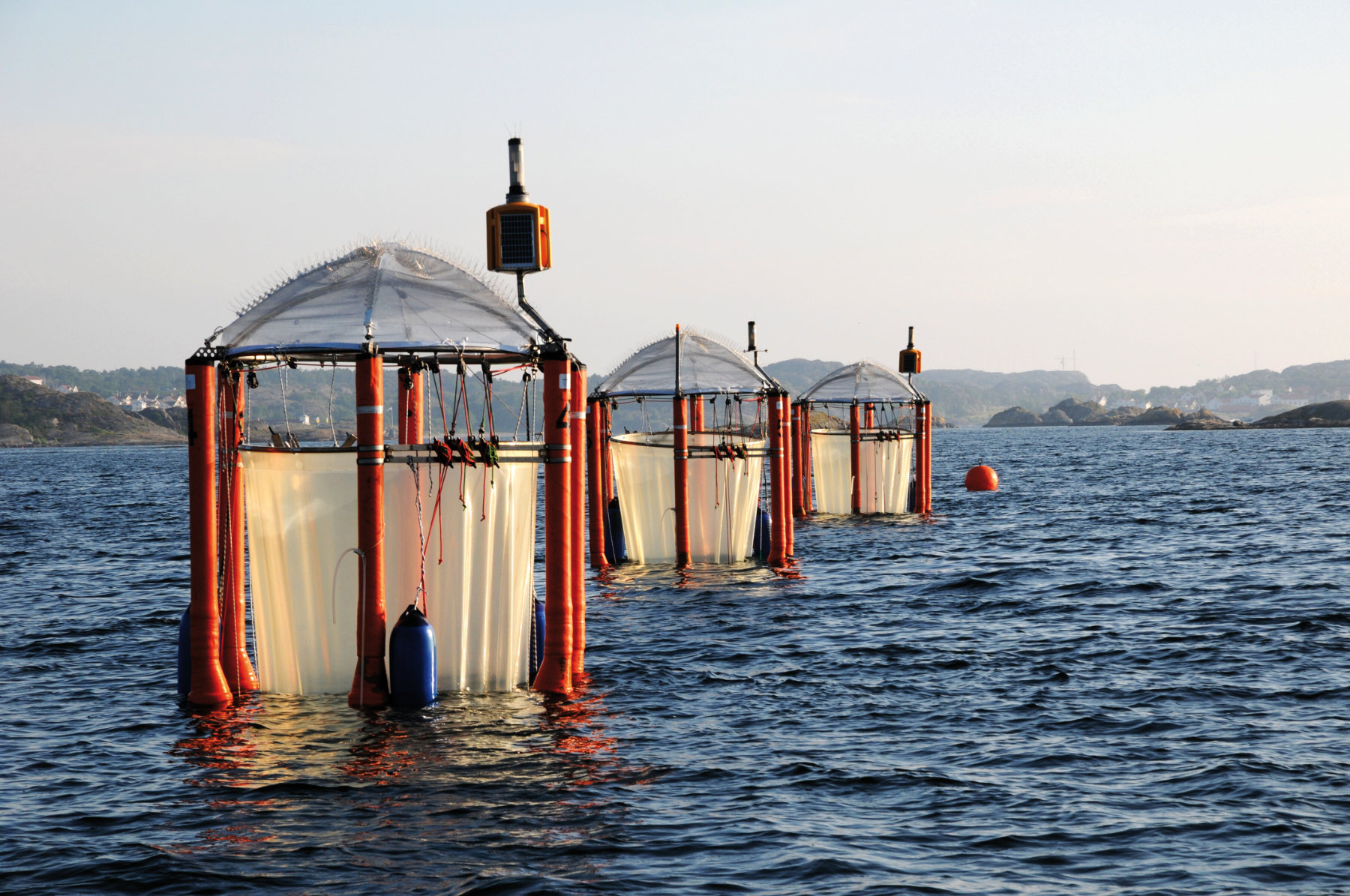
How does life in the ocean cope with changing environmental conditions? Might sea life run out of oxygen? Can corals learn to live in hot water?
The ocean changes all the time. But the exceptionally fast pace of today's anthropogenic global change poses a substantial risk to ocean habitats. Multidisciplinary research in Kiel is investigating ocean change, its societal consequences, and possible mitigation measures.
The researchers are also investigating hypoxia, reduced levels of dissolved oxygen in ocean water. This is a natural phenomenon in enclosed bays or seas, but is less familiar in the open ocean. Ocean warming combined with nutrient enrichment favours the development of large masses of algae. When the light, nutrients and other resources they need to grow start to decline, these masses of algae die off, and their microbial degradation may lead to hypoxic conditions which create dead zones in deeper waters. If this lifeless water wells up in shallow areas, there can be economic as well as ecological harm. These waters are used intensely for fishing, leisure and other purposes.
On a more cheerful note, recent findings suggest that bioinvasions by novel species, while undoubtedly a major ecological risk, may have a positive side. A substantial number of native species will disappear. But if their role can be taken over by more robust invaders, there may be times when the ecosystem benefits.
Kiel research, carried out in collaboration with valued colleagues around the world, is showing us more about bioinvasion pathways. In addition to known routes such as ballast water, aquaculture and hull-fouling, new findings suggest that that potential invaders may arrive as hitch-hikers in the guts of migratory fish and sea birds. Evaluating the risks and benefits of bioinvasions, and the importance of man-made versus natural vectors, calls for an innovative combination of fieldwork, modelling and the expertise of lawyers, economists and other social scientists. International cooperation in marine ecology with all the Baltic nations and with Israel, France, Portugal, Iran, Cape Verde and other maritime countries around the world renders our insights more robust.
This research may also help to ease our biggest worries about the future of the ocean. It suggests that many oceanic species have enough genetic diversity to cope with rapid climate change. Within a period of three months, diatoms in the mesocosm experiment (see box) can adapt the way they use their genes to cope with increased ocean acidity. This is known as "sorting" their genetic diversity to adapt to changed conditions.
Predictions say that environmental conditions will change in the coming centuries. Who are the winners and losers from that change? Experiments on evolution under natural conditions, conducted in Kiel, can shed light on how species react to different kinds of environmental stress, like the rise of temperature or ocean acidification, and how ecosystems might change.
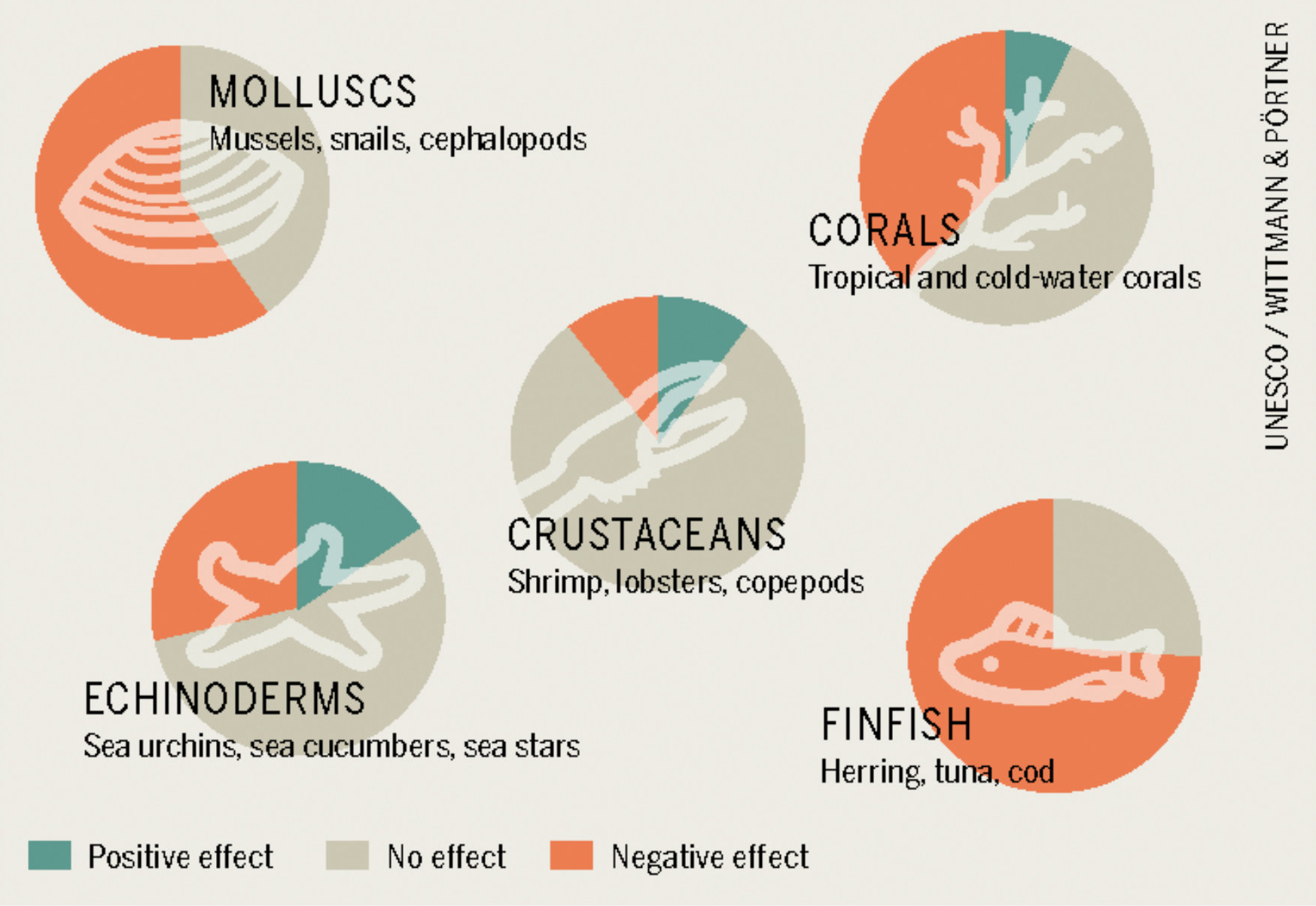
Experimental Evolution
As the ocean gets more acidic, calcifying organisms might be expected to find it harder to grow their scales, shells or skeletons. But Kiel marine research suggests that this short-term view may not be the full story. Groups led by Ulf Riebesell and Thorsten Reusch from GEOMAR have looked at the ability of the world's "most important calcifying organism," the coccolithophore Emiliania huxleyi, to respond to ocean acidification. Most research in this area has been short-term, but this project involved several experiments, the longest of which lasted for four and a half years and almost 2000 generations. It revealed that experimental populations exposed to higher levels of carbon dioxide initially grew more slowly than those experiencing current levels, but that they could fully restore their initial growth rates after long-term evolution [2]. However after four years, all of the cultures exposed to extra carbon dioxide had reduced coccolith (scale) growth. So long-term adaptation reduced the capacity for coccolithophores to produce calcite. The authors therefore have a mixed message: while growth rates are restored by adaptive evolution, calcification is switched off under high concentrations of CO2. On a more positive note, another series of experiments revealed even faster adaptation to warming, which played out independently of simultaneous adaptation to acidification.
To bridge the gap between long-term laboratory experimentation and more realistic field conditions, Kiel researchers have worked with colleagues from the UK, the US, Finland and Sweden on mesocosm experiments which show that marine microbes are surprisingly robust when it comes to coping with climate change. They say in their report that: "(Their) large population sizes and rapid cell division rates (mean that) marine microbes have, or can generate, ample variation to fuel evolution over a few weeks or months, (giving them) the potential to evolve in response to global change."[3] By exposing a natural plankton community to higher or lower levels of carbon dioxide, they found that genotypes of the marine diatom Skeletonema marinoi were sorted within three months. Over that short period, this important species could evolve in response to carbon dioxide enrichment to the point where its population growth rate increased by 30 per cent [4]. Future Kiel research will emphasise this genetic response to climate change.
The importance of this Kiel research was recognised in 2011 by the award of Germany's most highly endowed research prize to Ulf Riebesell. He was honoured with the Leibniz Prize of the German Research Foundation, a €2.5 million award bestowed for his research on the effects of global change on marine ecosystems, and especially the effects of climate change and ocean acidification on calcifying marine organisms. The research which led to the award was carried out both in the laboratory and in the field, using freely-drifting experimental tanks developed in Kiel. His mesocosm experiments were carried out in the Baltic Sea, in Norwegian and Swedish Fjords and in Arctic waters, and in the Pacific Ocean off Hawaii.
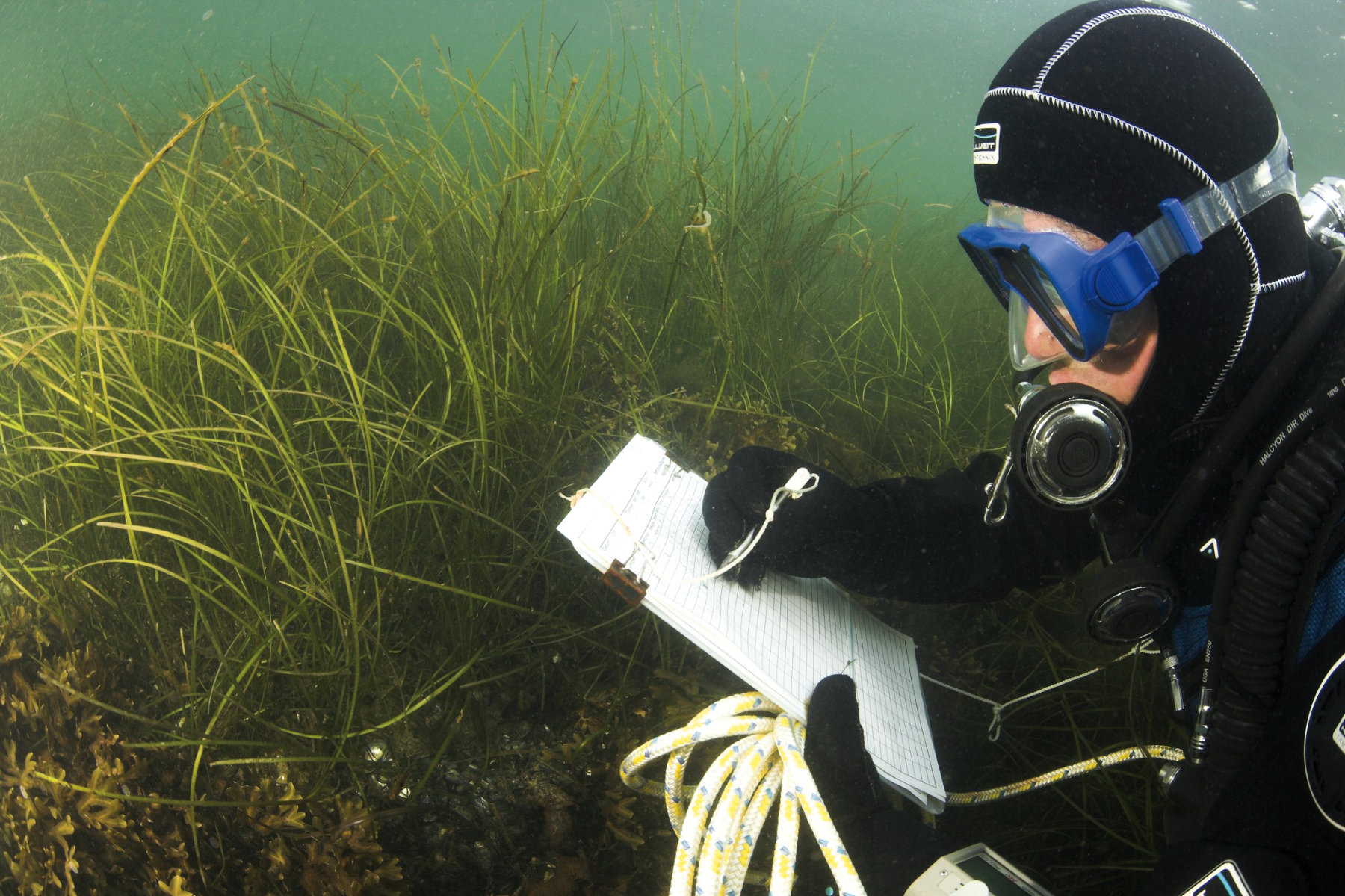
This adaptability is the subject of several projects conducted within Future Ocean on marine life and its ability to adapt to high levels of stress. As well as temperature, it is looking at stresses such as increased salinity and acidity to see how rapidly species and whole ecosystems can adapt. It has already shown that species in the Baltic often have more resistance to acidification than their close relatives in the North Sea. One variable is the prevalence of parasites. Under rapid stress, host species could lose all their parasites, which might be a good result, or we could get tougher, invasive parasites replacing the present ones. Wahl stresses that the project is not all about biology. "It needs ethical thinking to decide how we make use of these findings."
Coral reefs are another well-publicised example of a marine environment at risk, especially the Great Barrier Reef in Australia. As seawater gets warmer, the corals there are vulnerable to death by a process called coral bleaching. But corals in the Persian Gulf can live at 40°, much higher than the temperatures found off Australia. It might be possible to use these corals for a form of controlled species invasion. Or it could be feasible to train Australian corals in the warm waters of the Gulf and reintroduce them to the Great Barrier Reef. Kiel research will certainly contribute to such efforts.
What is to come in this field of research? Thorsten Reusch at Kiel suggests that: "The next stage is to take findings from our long-term evolution experiments, which are carried out in deliberately simple conditions, and apply them in the outdoors. We are currently expanding our work to have simple multi-species communities in long-term evolution, in order to see how they evolve under competition." This may mean including pathogens or even human consumers into the experimental environment. It might well involve working with a range of microbe species rather than with single ones, for example by looking at the association between bacteria and phytoplankton.

Kiel´s Outdoor Benthocosms
The Kiel Outdoor Benthocosms (KOB) is an array of 12 water tanks connected to the Baltic on the Kiel seafront. Kiel scientists use it to investigate the possible effects of global warming on the marine environment under near-natural conditions.
The tanks are designed to improve upon earlier mesocosm systems, which provide a constant setting for marine life. Instead, they allow researchers to simulate future conditions while respecting natural fluctuations. If climate modelling or extrapolations from time series suggest changing salinity, carbon dioxide concentration, hypoxia or the availability of nutrients, those conditions can be simulated here for multispecies communities. It is also possible to examine extreme events, for instance by introducing a heatwave or a wave of cold into the temperature regime. The tanks contain over 100 sensors to track and control environmental variables.
This approach is generating more realistic insights into the ecological consequences of global change. One important finding concerns the seasonal variation of global change impact. In a warmer sea, organisms may grow more in winter if resources are available, increasing their stamina for surviving the heat stress of summer. In contrast, high metabolism in a warmer winter may be stressful when resources such as light are lacking. Better or worse winter performance may affect the rate and timing of spring reproduction.
Shifting environmental conditions affect different plants and animals in different ways. For example, ecologically important and long-lived seaweeds suffer more from temperature stress in summer than do the short-lived filamentous algae which compete with them. These algae, in turn, are kept under control by small crabs which graze on them. But if the water temperature exceeds 21°, these crabs disappear. So warmer conditions can lead to a complete takeover by new species of small algae, with different and less valuable ecological functions.
Thus Kiel marine research takes place on all possible scales, from the laboratory bench to the semi-closed mesocosms and on to the open ocean. Future experiments will allow more realistic and longer investigations. including the ability to test the effects of more variable environmental factors, more biotic interaction, and new components such as parasites and pathogens.
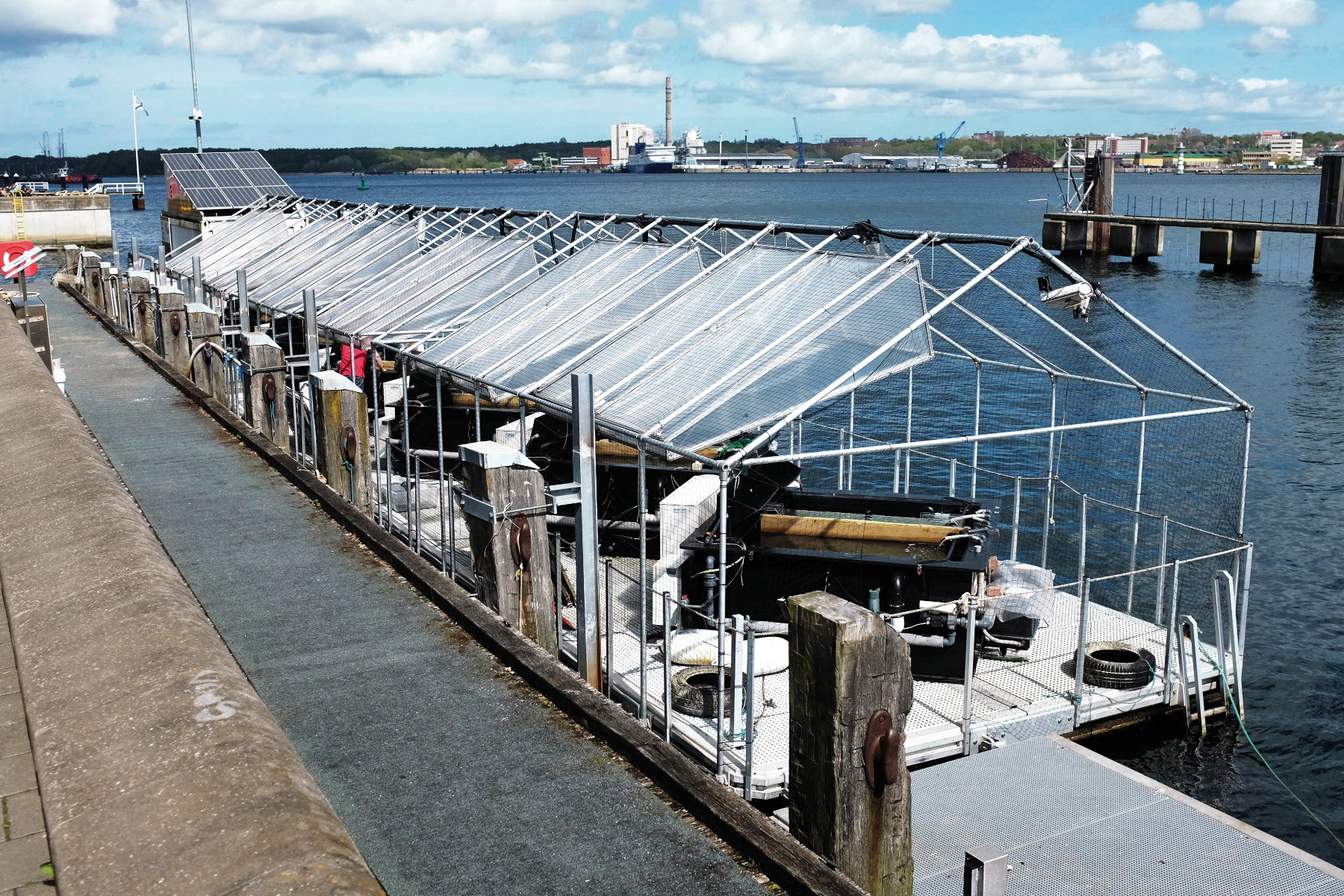
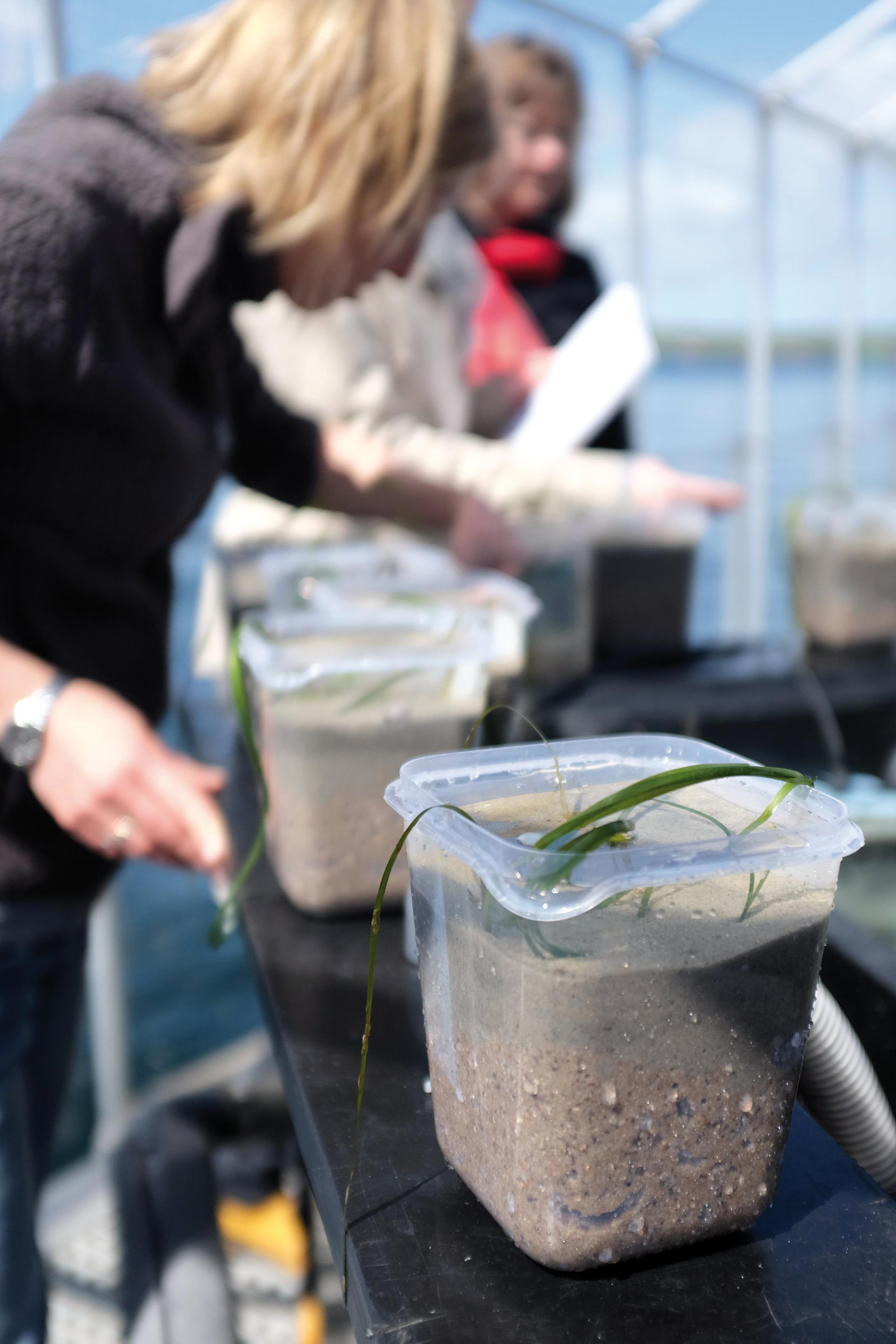
References
[1] Langer, J. A. F., Sharma, R., Schmidt, S. I., Bahrdt, S., Horn, H. G., Alguero-Muniz, M., Nam, B., Achterberg, E. P., Riebesell, U., Boersma, M., Thines, M. und Schwenk, K. (2017) Community barcoding reveals little effect of ocean acidification on the composition of coastal plankton communities: evidence from a long-term mesocosm study in the Gullmar Fjord, Skagerrak. PLoS ONE, 12 (4). e0175808. DOI 10.1371/journal.pone.0175808.
[2] Lohbeck, K. T., Riebesell, U. und Reusch, T. B. H. (2012) Adaptive evolution of a key phytoplankton species to ocean acidification. Nature Geoscience, 5 . pp. 346-351. DOI 10.1038/ngeo1441.
[3] Scheinin, M., Riebesell, U., Rynearson, T. A., Lohbeck, K. T. und Collins, S. (2015) Experimental evolution gone wild. Interface: Journal of the Royal Society, 12 (106). p. 20150056. DOI 10.1098/rsif.2015.0056.
[4] Schlüter, L., Lohbeck, K. T., Gutowska, M. A., Gröger, J. P., Riebesell, U. und Reusch, T. B. H. (2014) Adaptation of a globally important coccolithophore to ocean warming and acidification. Nature Climate Change, 4 (11). pp. 1024-1030. DOI 10.1038/NCLIMATE2379.

